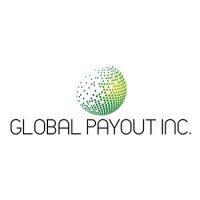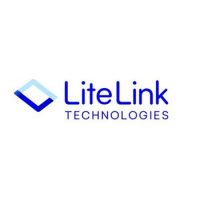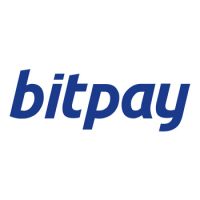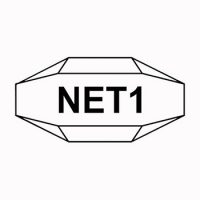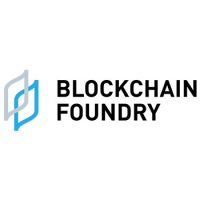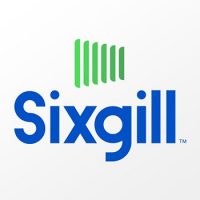Blockchain Press Releases
Edge Computing Market worth $111.3 billion by 2028 – Exclusive Report by MarketsandMarkets™
CHICAGO, July 4, 2023 /PRNewswire/ — IoT and connected device adoption will increase, 5G networks will be integrated, edge AI and machine learning will grow, and a continuum from edge to cloud will be created. The trajectory of edge computing will also be influenced by applications that are industry-specific, improved security and privacy safeguards, and a cooperative edge computing ecosystem.
The Edge Computing Market size is expected to grow from USD 53.6 billion in 2023 to USD 111.3 billion by 2028, at a Compound Annual Growth Rate (CAGR) of 15.7% during the forecast period, according to a new report by MarketsandMarkets™. The advancements in hardware technology, open-source software and development tools, surge in adoption of cloud computing services, and the growth of IoT, requirement of a distributed computing paradigm that brings computation and data storage closer to the location where it is sought are a few factors driving the growth of the Edge Computing Market.
Browse in-depth TOC on “Edge Computing Market”
269 – Tables
58 – Figures
285 – Pages
Download PDF Brochure @ https://www.marketsandmarkets.com/pdfdownloadNew.asp?id=133384090
Scope of the Report
|
Report Metrics |
Details |
|
Market size available for years |
2017-2028 |
|
Base year considered |
2022 |
|
Forecast period |
2023-2028 |
|
Forecast units |
Value (USD Million/USD Billion) |
|
Segments covered |
Components (Hardware, Software, and Services), Application (Smart Cities, Remote Monitoring), Organization Size, Vertical, and Regions |
|
Regions covered |
North America, Europe, Asia Pacific, Middle East and Africa, and Latin America |
|
Companies covered |
Cisco (US), AWS (US), Dell Technologies (US), Google (US), HPE (US), Huawei (China), IBM (US), Intel (US), Litmus Automation (US), Microsoft (US), Nokia (Finland), ADLINK (Taiwan), Axellio (US), Capgemini (France), ClearBlade (US), Digi International (US), Fastly (US), StackPath (US), Vapor IO (US), GE Digital (US), Moxa (Taiwan), Sierra Wireless (Canada), Juniper Networks (US), EdgeConnex (US), Belden (US), Saguna Networks (Israel), Edge Intelligence (US), Edgeworx (US), Sunlight.io (UK), Mutable (US), Hivecell (US), Section (US), EdgeIQ (US) |
By component, hardware segment to record the second highest CAGR during the forecast period
The hardware segment plays a crucial role in the Edge Computing Market. Edge computing involves processing data closer to its source rather than relying solely on centralized cloud infrastructure. This proximity to data sources requires specialized hardware components to enable efficient and reliable computing at the edge. Hardware in the Edge Computing Market includes devices such as edge servers, edge gateways, routers, switches, sensors, and other edge devices. These components are designed to handle the unique challenges of edge environments, including limited power and computing resources, harsh conditions, and low-latency requirements. Additionally, specialized hardware accelerators, such as graphics processing units (GPUs) and field-programmable gate arrays (FPGAs), are employed to enhance processing capabilities and enable tasks like real-time analytics, machine learning, and video processing at the edge. Therefore overall, the hardware segment is vital for enabling the infrastructure and computational capabilities necessary to support the growing demand for edge computing applications across various industries.
By Application, Remote monitoring segment to exhibit significant growth during the forecast period
Remote monitoring services for edge computing technology have been there for years. The new digital monitoring services utilize the latest technologies, such as cloud computing, data analytics, AI, and mobile communications. Organizations are finding edge computing to reduce latency and moving toward the decentralized edge and scattering IT infrastructure over multiple remote sites. In a time-sensitive business, where delivery of every data packet is critical to the business, edge computing can make a huge difference through localized efficient processing; for instance, in the oil and gas industry, seismic and sensor data are required to be frequently stored and physically shipped, which can result in costly delays. In such cases, edge computing helps balance processing loads and analyse telemetry data (irrespective of global distances) and improves business continuity by protecting against unplanned outages or data loss. Thus, with remote work on the rise and businesses utilizing digital platforms and services, edge computing functionalities will deliver faster, reliable, and cheaper data processing.
Request Sample Pages @ https://www.marketsandmarkets.com/requestsampleNew.asp?id=133384090
By organization size, large enterprises follow SMEs and is showing significant growth in the market
Organizations with more than 1,000 employees are categorized under the large enterprises segment. The traction of edge computing solutions in large enterprises is higher than in SMEs. This is due to their ability to adapt and leverage the benefits of advanced technologies, including edge computing. Enterprises have their offices across regions. The mentioned factors enable enterprises to provide a solution through real-time employee data access. Large enterprises are adopting edge computing solutions increasingly to enhance the operational efficiency of their businesses across regions. The Edge Computing Market is undergoing significant technological transitions, such as enhancement in personalized marketing, big data, social media, real-time solutions, and the use of analytics and ML. All these advancements are favourably welcomed and highly adopted by large organizations. According to a Business Today report in June 2022, edge computing can help large enterprises reduce network costs, avoid bandwidth constraints, reduce transmission delays, limit service failures, and provide better control over the movement of sensitive data. Advanced applications such as AI, proactive monitoring, predictable insights, AR and VR applications, benefit from computing at the edge.
European region to record second highest CAGR in the Edge Computing Market in 2023
Europe has shown significant economic growth in the past few years, despite a dynamic regulatory environment. This is due to the rising expectations of companies in the region to improve their business efficiency by saving time and money. Hence, several major US-based edge computing companies have expanded in the region to build strong clientele and establish a base of operations overseas. Similarly, the regional technology providers are collaborating with the global edge computing providers to maintain a competitive edge, retain existing customers, and allure new ones. For instance, Siemens, a German industrial software provider, collaborated with SAS to create AI-embedded IoT analytics for the
edge and cloud. This region’s IT and telecommunication sector is expected to grab the largest market share. The region is leading in 5G deployment. Telecom operators in this region, along with the US, are expected to spend USD 185 billion by 2026. The region is expected to have 214 million 5G connections by 2025.
Top Key Companies in Edge Computing Market:
The Major Players for Edge Computing Market includes some of the key vendors as well as startups offering contact center solutions across the globe, which include Cisco (US), AWS (US), Dell Technologies (US), Google (US), HPE (US), Huawei (China), IBM (US), Intel (US), Litmus Automation (US), Microsoft (US), Nokia (Finland), ADLINK (Taiwan), Axellio (US), Capgemini (France), ClearBlade (US), Digi International (US), Fastly (US), StackPath (US), Vapor IO (US), GE Digital (US), Moxa (Taiwan), Sierra Wireless (Canada), Juniper Networks (US), EdgeConnex (US), Belden (US), Saguna Networks (Israel), Edge Intelligence (US), Edgeworx (US), Sunlight.io (UK), Mutable (US), Hivecell (US), Section (US), EdgeIQ (US).
Inquiry Before Buying @ https://www.marketsandmarkets.com/Enquiry_Before_BuyingNew.asp?id=133384090
Recent Developments
- In May 2023, Dell Technologies unveiled its NativeEdge platform that has the capability to ease the deployment and management complexities of edge devices for remote-focused firms. NativeEdge replaces Dell’s Project Frontier, which was launched earlier. The new platform is designed as an edge computing platform that provides clients a choice around software, IoT, multi-cloud tools and operational technology to simplify, automate and manage edge infrastructure.
- In April 2023, Nokia launched 4 third-party applications for MX Industrial Edge, which would foster enterprises connect, collect, and analyze data from disparate sources, including video cameras, thereby unlocking its value from operational technology assets over a robust and secure on-premises edge.
- In April 2023, Dell Technologies collaborated with Ericsson which will enable open cloud networks that allow customers to choose their own infrastructure while ensuring telco-grade performance at the far edge. Including Dell PowerEdge servers to Ericsson’s Cloud RAN solution, including the PowerEdge XR8000 and XR5610, which are specifically designed for telecom, Open RAN and mobile edge-computing workloads, the company brings more choices and flexibility for Cloud RAN customers. Dell PowerEdge servers assist facilitating the Cloud RAN journey owing to their high performance, small form factors, resilience, and interconnectivity with the larger network(s).
- In February 2023, Cisco introduced its Cisco Edge Intelligence, a solution by Cisco that improves data governance and control, fetching intelligent insights from connected assets to improve the competitiveness of an organization. It is built on Cisco’s industry-leading multi-layered security.
- In February 2023, the acquisition of Athonet by HPE will integrate Athonet’s technology into its existing Communications Service Provider [CSP] and Aruba networking enterprise offerings to create a private networking portfolio which accelerates digital transformation from edge-to-cloud. Few benefits include enhanced private networks, accelerated private 5G deployments, new enterprise revenue streams for telecom companies with differentiated services leveraging 5G and Wi-Fi, management of operational complexity and cost efficiency with 5G orchestration and zero-touch automation to deliver newer workloads from edge-to-cloud.
Edge Computing Advantages:
- Edge computing moves computational power closer to the end user’s devices or the data source. By processing data locally instead of sending it to a centralised cloud or data centre, a considerable amount of latency is eliminated. Real-time processing and decision-making can take place at or close to the edge using edge computing, leading in quicker response times and better user experiences.
- Edge computing improves reliability and fault tolerance by dividing computing resources among numerous edge devices. Edge devices can carry on operating independently in the event of a network outage or disruption, ensuring that crucial operations are not hampered. Applications include industrial automation, healthcare, and transportation that depend on uninterrupted operations in particular need of this resilience.
- Edge computing works to reduce the load on network capacity by processing data close to the edge. Edge devices have the ability to filter, combine, and analyse data locally rather than sending enormous amounts of raw data to a central server or cloud for analysis. By decreasing the amount of data that must be transmitted across the network, bandwidth use is optimised, and expenses are reduced.
- By decreasing the attack surface and exposing less data, edge computing improves security and privacy capabilities. Processing locally reduces the likelihood of data breaches during transmission since sensitive data can be processed and examined without ever leaving the edge device. Additionally, by putting stringent territorial constraints on the storage of sensitive data, edge computing aids organisations in abiding by data sovereignty regulations.
- Edge computing is highly scalable and versatile since it supports distributed and modular design. The network can readily accommodate new edge devices, increasing computing capacity as required. For quickly developing industries like Internet of Things (IoT) installations, where a lot of devices create a lot of data that needs to be analysed in real-time, this scalability and flexibility is very helpful.
- Organisations can save money by using edge computing to lower their data processing, storage, and transmission expenses. Edge computing lowers the quantity of data that needs to be transferred to centralised servers or the cloud by processing data locally, which saves money on network traffic. Because only pertinent or aggregated data is delivered for subsequent analysis, it significantly reduces the need for extensive data storage infrastructure.
Report Objectives
- To describe and forecast the Edge Computing Market based on components (hardware, software, and services), application, organization size, verticals, and regions.
- To forecast the market size of five main regions: North America, Europe, Asia Pacific, Middle East and Africa, and Latin America
- To analyze subsegments with respect to individual growth trends, prospects, and contributions to the total market
- To provide detailed information about major factors (drivers, restraints, opportunities, and challenges) influencing the growth of the market
- To analyze opportunities in the market for stakeholders and provide details of the competitive landscape for major players
- To comprehensively analyze the core competencies* of key players in the market
- To track and analyze the competitive developments, such as product/solution launches and enhancements; business expansions; acquisitions; and partnerships, contracts, and collaborations, in the market.
Browse Adjacent Markets: Cloud Computing Market Research Reports & Consulting
Related Reports:
Confidential Computing Market – Global Forecast to 2028
Retail Cloud Market – Global Forecast to 2028
Cloud-based Quantum Computing Market – Global Forecast to 2028
Cloud Computing Market – Global Forecast to 2027
Cloud Compliance Market – Global Forecast to 2027
About MarketsandMarkets™
MarketsandMarkets™ is a blue ocean alternative in growth consulting and program management, leveraging a man-machine offering to drive supernormal growth for progressive organizations in the B2B space. We have the widest lens on emerging technologies, making us proficient in co-creating supernormal growth for clients.
The B2B economy is witnessing the emergence of $25 trillion of new revenue streams that are substituting existing revenue streams in this decade alone. We work with clients on growth programs, helping them monetize this $25 trillion opportunity through our service lines – TAM Expansion, Go-to-Market (GTM) Strategy to Execution, Market Share Gain, Account Enablement, and Thought Leadership Marketing.
Built on the ‘GIVE Growth’ principle, we work with several Forbes Global 2000 B2B companies – helping them stay relevant in a disruptive ecosystem. Our insights and strategies are molded by our industry experts, cutting-edge AI-powered Market Intelligence Cloud, and years of research. The KnowledgeStore™ (our Market Intelligence Cloud) integrates our research, facilitates an analysis of interconnections through a set of applications, helping clients look at the entire ecosystem and understand the revenue shifts happening in their industry.
To find out more, visit www.MarketsandMarkets™.com or follow us on Twitter, LinkedIn and Facebook.
Contact:
Mr. Aashish Mehra
MarketsandMarkets™ INC.
630 Dundee Road
Suite 430
Northbrook, IL 60062
USA: +1-888-600-6441
Email: [email protected]
Research Insight: https://www.marketsandmarkets.com/ResearchInsight/edge-computing-market.asp
Visit Our Website: https://www.marketsandmarkets.com/
Content Source: https://www.marketsandmarkets.com/PressReleases/edge-computing.asp
Logo: https://mma.prnewswire.com/media/660509/MarketsandMarkets_Logo.jpg
View original content:https://www.prnewswire.co.uk/news-releases/edge-computing-market-worth-111-3-billion-by-2028—exclusive-report-by-marketsandmarkets-301869425.html

Blockchain Press Releases
Bybit Surpasses 70 Million Users, Reinforces Commitment to Transparency and Institutional Growth

DUBAI, UAE, May 9, 2025 /PRNewswire/ — Bybit, the world’s second-largest cryptocurrency exchange by trading volume, today announced it has surpassed 70 million registered users, a milestone that highlights the platform’s sustained global growth and deepening trust among both retail and institutional clients. This achievement underscores Bybit’s robust market presence and its steadfast commitment to security, compliance, and product innovation.
“Reaching 70 million users is more than a number—it’s a testament to the trust our global community places in us,” said Ben Zhou, co-founder and CEO of Bybit. “We are doubling down on compliance, institutional-grade infrastructure, and user-centric innovation to ensure everyone—from first-time traders to global institutions—can access the future of finance with confidence.”
Strengthening Global Compliance and Regulatory Engagement
Bybit continues to expand its global compliance framework, working closely with regulators around the world. Most recently, Bybit held strategic discussions with Vietnam’s Ministry of Finance, contributing to the country’s regulatory sandbox initiative by sharing expertise in KYC, AML, and international best practices.
Bybit has also made key progress in major jurisdictions, including the United Arab Emirates, further demonstrating its commitment to regulatory alignment and operational transparency.
Accelerating Institutional Growth
Bybit is seeing rapid growth among institutional clients, driven by high-performance trading infrastructure, advanced risk controls, and strategic partnerships. The integration with Zodia Custody—a leading provider of institutional-grade custody and off-venue settlement solutions—reflects Bybit’s ongoing efforts to meet the needs of sophisticated investors with robust, compliant offerings.
Pioneering Web3 Integration and Real-World Utility
Bybit continues to lead in practical Web3 innovation. The Bybit Card, now used by nearly 2 million people, enables everyday crypto spending, while Bybit Pay streamlines on-chain and off-chain transactions for both users and merchants.
In line with its user-first philosophy, Bybit is also leveraging artificial intelligence to enhance trading, research, and support services. CryptoLens, an in-house AI analytics tool, offers users deep insights into token fundamentals, community activity, social trends, and tokenomics—even for projects not listed on the platform. TradeGPT, an AI agent trained on Bybit’s proprietary data, delivers rapid price action summaries and technical analysis, helping traders make smarter decisions. Complementing these innovations, an AI Support Agent enhances customer service by improving response efficiency and user experience across the platform.
Bridging Traditional Finance and the Future of Digital Assets
Bybit remains committed to its role as #TheCryptoArk—a safe, trusted bridge from traditional finance into the world of Web3. Through intuitive products, regulatory collaboration, and cutting-edge technology, Bybit empowers users of all levels to navigate and thrive in the digital asset ecosystem.
“We’re building the infrastructure for the next era of finance,” Ben added. “By championing regulation, professionalism, and a relentless user-first approach, we’re shaping a safer, more inclusive, and more empowering financial future for all.”
#Bybit / #TheCryptoArk
About Bybit
Bybit is the world’s second-largest cryptocurrency exchange by trading volume, serving a global community of over 70 million users. Founded in 2018, Bybit is redefining openness in the decentralized world by creating a simpler, open, and equal ecosystem for everyone. With a strong focus on Web3, Bybit partners strategically with leading blockchain protocols to provide robust infrastructure and drive on-chain innovation. Renowned for its secure custody, diverse marketplaces, intuitive user experience, and advanced blockchain tools, Bybit bridges the gap between TradFi and DeFi, empowering builders, creators, and enthusiasts to unlock the full potential of Web3. Discover the future of decentralized finance at Bybit.com.
For more details about Bybit, please visit Bybit Press
For media inquiries, please contact: [email protected]
For updates, please follow: Bybit’s Communities and Social Media
Discord | Facebook | Instagram | LinkedIn | Reddit | Telegram | TikTok | X | Youtube
Logo – https://mma.prnewswire.com/media/2267288/Logo.jpg
![]() View original content:https://www.prnewswire.co.uk/news-releases/bybit-surpasses-70-million-users-reinforces-commitment-to-transparency-and-institutional-growth-302451104.html
View original content:https://www.prnewswire.co.uk/news-releases/bybit-surpasses-70-million-users-reinforces-commitment-to-transparency-and-institutional-growth-302451104.html

Blockchain Press Releases
Unleashing the Power of Futures Combo Bots on Bybit: Leveling up Futures Trading with More Rewards

DUBAI, UAE, May 9, 2025 /PRNewswire/ — Bybit, the world’s second-largest cryptocurrency exchange by trading volume, Futures Combo Carnival, a month-long trading event rewarding both new and experienced Futures Combo traders with multiple rewards tracks. Trading thresholds start at 300 USDT with rewards of up to 500 USDT in prizes weekly.
The largest Futures Combo campaign on Bybit to date, the Carnival gives traders even more reasons to make their futures trading journey hassle-free and more rewarding. Bot-enabled automated trading is becoming the norm among strategic traders in a turbulent market, where no traders can afford manmade mistakes or delays in execution.
Bybit’s Futures Combo Bot is a powerful tool for streamlining users’ futures trading experience, empowering them to build portfolios and rebalance positions across multiple futures contracts. The innovative solution allows traders to set up a Bot within minutes, minimizing manual management of complex trading strategies, and achieving both efficiency and flexibility when managing combos of futures contracts.
From now to Jun. 9, 2025, eligible Bybit users may take part in two events with a welcome bonus for first-time users:
- The Combo Battle offers newcomers who achieve a trading volume of 300 USDT an immediate 5 USDT Bot Bonus on a first-come, first-served basis, while experienced traders can earn lucky draw tickets by reaching volume milestones of 1,000 USDT and 2,500 USDT respectively using Bybit’s Futures Combo Bot.
- The Combo Challenge invites Mandarin-speaking Key Opinion Leaders to create and share their trading strategies on social media using the hashtag #ComboChallenge, with three weekly winners receiving 500 USDT each.
Bybit is committed to making futures trading more accessible to users looking to diversify their trading strategies. With rewards designed for both newcomers and experienced traders, this event strengthens community engagement while supporting users wherever they are on their trading journey. For more details and terms and conditions, users may visit: Bybit Futures Combo Carnival
#Bybit / #TheCryptoArk
About Bybit
Bybit is the world’s second-largest cryptocurrency exchange by trading volume, serving a global community of over 60 million users. Founded in 2018, Bybit is redefining openness in the decentralized world by creating a simpler, open and equal ecosystem for everyone. With a strong focus on Web3, Bybit partners strategically with leading blockchain protocols to provide robust infrastructure and drive on-chain innovation. Renowned for its secure custody, diverse marketplaces, intuitive user experience, and advanced blockchain tools, Bybit bridges the gap between TradFi and DeFi, empowering builders, creators, and enthusiasts to unlock the full potential of Web3. Discover the future of decentralized finance at Bybit.com.
For more details about Bybit, please visit Bybit Press
For media inquiries, please contact: [email protected]
For updates, please follow: Bybit’s Communities and Social Media
Discord | Facebook | Instagram | LinkedIn | Reddit | Telegram | TikTok | X | Youtube

Logo – https://mma.prnewswire.com/media/2267288/Logo.jpg
![]() View original content:https://www.prnewswire.co.uk/news-releases/unleashing-the-power-of-futures-combo-bots-on-bybit-leveling-up-futures-trading-with-more-rewards-302451105.html
View original content:https://www.prnewswire.co.uk/news-releases/unleashing-the-power-of-futures-combo-bots-on-bybit-leveling-up-futures-trading-with-more-rewards-302451105.html

Blockchain Press Releases
Bybit Unifies Loan Products to Enhance Capital Efficiency for Crypto Traders

DUBAI, UAE, May 9, 2025 /PRNewswire/ — Bybit, the world’s second-largest cryptocurrency exchange by trading volume, is enhancing the user experience and capital efficiency of its lending products by integrating Crypto Loans (flexible loans) and Fixed Rate Loans into a single, streamlined interface.
The integration introduces a unified platform for both loan types, enabling users to compare, manage, and optimize their borrowing strategies with greater ease. All loan products are now accessible under the Crypto Loans page, with a redesigned layout that prioritizes usability and transparency.
“Our goal is to simplify how users interact with our lending products while enhancing their capital flexibility,” said Emily Bao, Head of Spot at Bybit. “By consolidating management tools and aligning risk models, we’re giving our users more control and clarity over their borrowing activity.”
Key upgrades include:
- Unified Cross Margin Model: Both flexible and fixed-term loans will now operate under a shared cross-margin system, allowing users to benefit from consolidated Loan-to-Value (LTV) ratios — set at 80% (initial), 85% (margin call), and 92% (liquidation).
- Shared Collateral: Collateral can now be used interchangeably across both loan types, enabling more agile capital deployment.
- Tiered Collateral Ratios: All supported assets will follow a tiered collateral system, reflecting each asset’s risk profile — consistent with the structure previously applied to Fixed Rate Loans.
- Updated Interest Calculation: Interest will be calculated hourly using a compounding method: total debt (principal + accrued interest) multiplied by the hourly interest rate.
Existing loan orders will remain unaffected, continuing under their original terms and conditions. For users seeking further information, detailed guides on both Fixed Rate Loans and Crypto Loans are available via the Bybit Help Center.
This strategic move reaffirms Bybit’s commitment to innovation and user empowerment in the evolving digital asset economy.
#Bybit / #TheCryptoArk
About Bybit
Bybit is the world’s second-largest cryptocurrency exchange by trading volume, serving a global community of over 60 million users. Founded in 2018, Bybit is redefining openness in the decentralized world by creating a simpler, open and equal ecosystem for everyone. With a strong focus on Web3, Bybit partners strategically with leading blockchain protocols to provide robust infrastructure and drive on-chain innovation. Renowned for its secure custody, diverse marketplaces, intuitive user experience, and advanced blockchain tools, Bybit bridges the gap between TradFi and DeFi, empowering builders, creators, and enthusiasts to unlock the full potential of Web3. Discover the future of decentralized finance at Bybit.com.
For more details about Bybit, please visit Bybit Press
For media inquiries, please contact: [email protected]
For updates, please follow: Bybit’s Communities and Social Media
Discord | Facebook | Instagram | LinkedIn | Reddit | Telegram | TikTok | X | Youtube

Photo – https://mma.prnewswire.com/media/2683407/Bybit_Unifies_Loan_Products_Enhance_Capital_Efficiency_Crypto_Traders.jpg
Logo – https://mma.prnewswire.com/media/2267288/5310253/Logo.jpg
![]() View original content:https://www.prnewswire.co.uk/news-releases/bybit-unifies-loan-products-to-enhance-capital-efficiency-for-crypto-traders-302451043.html
View original content:https://www.prnewswire.co.uk/news-releases/bybit-unifies-loan-products-to-enhance-capital-efficiency-for-crypto-traders-302451043.html

-

 Blockchain Press Releases3 days ago
Blockchain Press Releases3 days agoHTX Premieres USD1 Stablecoin Globally, Partnering with World Liberty Financial to Forge a New Era of Decentralized Economy
-
Blockchain2 days ago
Colb Asset SA Raises $7.3 Million in Oversubscribed Round to Bring Pre-IPO Giants to Blockchain
-

 Blockchain6 days ago
Blockchain6 days agoUnitedStaking.com Launches Advanced Crypto Staking Platform with Global Reach and Real-World Impact
-

 Blockchain2 days ago
Blockchain2 days agoBlocks & Headlines: Today in Blockchain – May 7, 2025 | Coinbase, Riot Games, Curve DAO, Litecoin, AR.IO
-

 Blockchain Press Releases3 days ago
Blockchain Press Releases3 days agoJuCoin made a global impact at TOKEN2049 Dubai, advancing its ecosystem with the “Peak Experience” vision and JuChain’s robust tech.
-

 Blockchain Press Releases2 days ago
Blockchain Press Releases2 days agoGRVT Launches Biggest Ever Trading Competition for Retail Traders, Offering Up to 175,000 USDT in Prizes
-

 Blockchain Press Releases1 day ago
Blockchain Press Releases1 day agoHTX and Justin Sun Launch $6M Mars Program Special Edition, Offering One User a Historic Space Journey
-

 Blockchain4 days ago
Blockchain4 days agoBlocks & Headlines: Today in Blockchain – May 5, 2025 – Arkham, Blockchair, Worldcoin, Maldives





